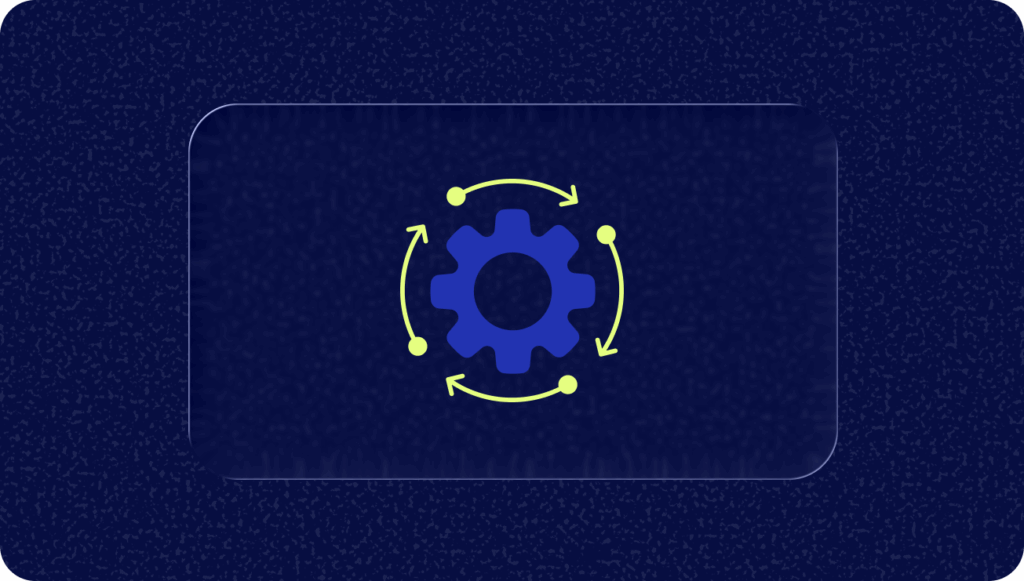Did you know?
The World Atlas of Languages documents 8,324 spoken or signed languages, of which about 7,000 are still in use.
This incredible linguistic diversity underscores the challenge and necessity of localization in today’s global marketplace. Every region speaks its language—literally and culturally—and it’s only logical for businesses to adapt not just their words but their entire approach to resonate with local audiences.
AI in the mix, the game is changing. In this blog, we’ll explore how AI is revolutionizing localization and multilingual support strategies, turning the challenge of global diversity into an opportunity for businesses to forge deeper, more personalized connections with global audiences.
What is AI Localization?
Unlike traditional localization, which often focuses on translating text or software for human use, AI localization goes much deeper. It involves training AI systems with localized data—carefully curated data sets that reflect the cultural, linguistic, and societal nuances of different regions. This ensures that AI-driven experiences are not only functional but also resonate with users on a cultural level.
AI localization means that voice assistants understand local dialects and accents, chatbots respond appropriately to cultural norms, and computer vision applications recognize region-specific imagery. It’s about making AI not just accessible but also relevant and relatable, creating experiences that people love, no matter where they are in the world.
The rise of services like creative adaptation and domain-specific translation underscores this shift. Creative adaptation goes beyond literal translation, capturing cultural nuances and emotional context—key for marketing and customer engagement. Meanwhile, domain-specific translation ensures accuracy and precision in specialized areas like IT and healthcare, where expert knowledge is essential. Together, these practices enhance AI localization, making it a critical element of a global business strategy.
Benefits of AI Localization
| Benefits | AI Localization |
| Speed and Efficiency | Leverages automation to translate and localize content quickly, reducing time-to-market. |
| Accuracy and Consistency | Uses machine learning to ensure consistent terminology and tone across all content. |
| Cost-Effectiveness | Reduces operational costs by automating large volumes of content, freeing up resources for more strategic tasks. |
| Scalability | Scales effortlessly to accommodate multiple languages and regions. |
| Collaboration and Integration | Seamlessly integrates with customer support platforms, CRM systems, and other software, facilitating real-time multilingual support and team collaboration. |
How can AI Localization benefit Multinational Businesses?
Integrating AI into localization strategies is revolutionizing how businesses connect with global audiences. It’s not just about translating words—it’s about creating meaningful experiences that resonate across cultures. Here’s how AI localization is making a difference:
- Accelerated Revenue Growth: Businesses that leverage AI for localization see significant boosts in revenue. Companies using AI-powered localization tools can tailor their game experiences, e-commerce sites, and knowledge bases to different regions, leading to higher sales and customer retention. AI helps brands quickly adapt marketing messages, products, experiences and support materials to local markets, making them more relevant and effective.
- Enhanced Productivity: AI takes the heavy lifting out of localization, enabling teams to focus on creative and strategic tasks. Instead of manually copying and pasting translations and adapting content for every market, AI can handle large volumes of content quickly and accurately. This not only speeds up time-to-market but also boosts overall productivity. AI makes it possible for customer support teams to instantly translate responses and localize FAQ content for different regions.
- Better Customer Experiences: When content feels local, customers notice. For example, AI can adapt chatbots to understand local dialects and cultural nuances, providing a more personalized and relevant experience. This is why companies that invest in AI localization often see higher customer satisfaction scores globally. AI localization allows businesses to create experiences that resonate with people in different regions, improving customer satisfaction and loyalty.
Essential Channels for AI Localization in Multilingual Support
Here are the key channels where AI localization can make a significant impact:
Help Center
As self-service options become increasingly popular, offering a well-localized help center is essential. Many customers prefer to find solutions independently rather than waiting for a representative, making it critical for businesses to provide multilingual resources. A localized help center can include an in-app resource center, a knowledge base, or an FAQ section, all translated into multiple languages.
Email, Messaging and Ticketing Systems
Email and messaging are common channels for customer support, marketing, and communication. Customers may send emails or chat messages and receive responses in their native language. Whether using pre-written templates translated into multiple languages or leveraging in-dashboard machine translation tools for real-time translation, agents can respond more quickly while maintaining professional communication standards.
Social Media Platforms
Social media has become a vital channel for customer engagement, with many customers preferring to connect with brands through platforms like Facebook, Instagram, and Twitter. Offering support in a customer’s native language on these platforms can significantly enhance their experience and foster greater trust and loyalty.
Aspects to Consider for AI Localization for Multilingual Support
A staggering 81% of customers now expect quicker service as technology advances and 73% are also looking for experiences that feel more tailored and personal to them. These shifting expectations highlight the critical role of AI in meeting the modern demands of customer support, driving both satisfaction and loyalty in an increasingly competitive landscape. Therefore it is important to consider a few important aspects when using AI for localization.
Technical Integration
Seamlessly integrating multilingual support across different channels and aligning translation software with existing systems can be a challenging task that demands advanced technical expertise.
Custom Trained Engines
Custom-trained AI engines, developed with specific cultural and linguistic datasets, are key to delivering high-quality customer service across different regions. For example, a chatbot designed for Japanese customers might emphasize politeness and formality, while one for a Brazilian audience might use a more casual and friendly tone. These engines can be tailored to understand regional slang, dialects, and even customer preferences, ensuring that the support provided feels genuinely local.
Quality Control
Maintaining high quality in localized AI support systems is essential to ensure consistency and reliability across different markets. This involves rigorous testing and validation processes, where localized content is reviewed not only for linguistic accuracy but also for relevance and clarity in the target culture. AI models need continuous training with region-specific data to avoid errors and deliver precise support. Regular audits and user feedback loops are crucial for refining these systems, ensuring that the AI remains responsive and effective no matter where it’s deployed.
Steps to Implement AI Localization in Your Business
1. Understand Local Culture and Context
Launching AI localization without a deep understanding of local culture and context can lead to ineffective and disconnected experiences for users. To ensure a successful localization strategy, start by researching your target markets to understand who your users are and what languages they speak.
Gather insights from user data, support interactions, and feedback to identify which languages are most critical. Additionally, evaluate how competitors are addressing these markets to uncover any gaps or opportunities.
Consider these crucial questions:
- How many languages should your AI support?
- Which languages should be prioritized?
Starting with a manageable number of languages, such as two, allows you to refine your strategy and build a solid foundation. As you better understand user needs and gather more data, you can gradually expand to include additional languages, ensuring your AI remains relevant and effective in diverse markets.
2. Use Custom Trained Models
Deploying traditional, one-size-fits-all AI models in diverse markets often results in clunky interactions and missed nuances. To truly connect with users across different regions, you need AI models specifically trained on region-specific data. This allows your AI to master local dialects, slang, and idiomatic expressions, creating more authentic and engaging interactions.
But it doesn’t stop there. Integrating regional variations is equally critical.
Traditional models might overlook differences in spelling, terminology, and formatting—like date and number conventions—leading to confusion and dissatisfaction. By incorporating these regional nuances into your AI’s design, you ensure it resonates with users and handles their language preferences and cultural contexts seamlessly. This tailored approach not only enhances the accuracy of your AI but also builds stronger connections with users, making your AI support truly effective and relatable in every market.
3. Equip Your Agents with Advanced Localization Tools
When agents are forced to toggle between support platforms, browsers, and basic translation tools, it not only slows down response times but also risks missing the cultural nuances crucial for effective communication. Traditional tools like Google Translate for localization can lead to inaccurate translations and disjointed interactions.
AI localization solutions are revolutionizing how businesses manage multilingual support. For example, Helpshift’s proprietary Language AI offers a lower translation error rate and is embedded directly within the Helpshift platform. Language AI can instantly translate incoming customer queries in any 75 supported languages into English and back, enabling faster, more accurate, and culturally sensitive responses.
4. Provide Multilingual Self-Serve Experiences with AI Localization
Offering self-serve experiences in multiple languages is crucial for providing seamless customer support while easing the burden on your support team. And localizing your knowledge base, allows your customers to find solutions in their native language, reducing the number of simple queries that reach your agents and freeing them up to focus on more complex issues.
Traditionally, translating and updating each article across various languages has been a resource-intensive task, consuming valuable time and driving up costs. Relying on third-party translation tools can often result in inconsistencies and delays.
Tools like Helpshift’s Help Center, equipped with the built-in machine translation feature Language AI, allow you to translate articles into multiple languages effortlessly with a single click. Additionally, AI-driven solutions like Helpshift’s Intent AI can transform your support strategy. Intent AI understands the intent behind user queries and provides up to three relevant FAQs in the customer’s native language. This combination of AI localization and advanced self-service tools helps you deliver a more efficient and satisfying customer experience across diverse markets, all while optimizing your resources.
5. Centralize Multilingual Queries with an AI-Enhanced Dashboard
A unified, AI-enhanced dashboard is crucial for centralizing and translating incoming queries, allowing agents to handle customer tickets seamlessly without the inefficiencies of switching between platforms.
With a solution like Helpshift’s AI-enhanced agent workspace, agents can translate customer messages directly within their workspace, ensuring smooth, context-aware communication. This tool allows agents to translate queries into their native language and respond in the customer’s language, all within a single platform.
Unlike generic translation tools like Google Translate, which often miss nuances and brand-specific terminology, Helpshift’s AI can be custom-trained to understand the context and unique language of your brand. This ensures that translations are aligned with your brand voice, leading to more personalized and effective customer interactions across different languages and regions.
The Future of Global Engagement Lies in AI Localization
AI localization is no longer a luxury; it’s imperative for businesses aiming to thrive in a global market. From translating customer inquiries with context-aware precision to enabling seamless multilingual support across various channels, AI localization enhances efficiency and customer satisfaction. It allows businesses to break down language barriers, deliver consistent and high-quality support, and ultimately, build stronger connections with their global customer base. Embracing AI localization now not only sets the stage for immediate success but also positions your business to adapt and grow in an increasingly interconnected world.
Want to see how Helpshift can help you? Book a Demo with us today!
Check Delivering of Better Player Support with Helpshift and Generative AI









